March 6, 2021
WARNING: This story contains graphic content.
It was supposed to be "easy time."
Back in 1978, Margaret was a teenaged troublemaker living in southwestern Ontario who had been charged with general mischief and stealing a car. After her arrest, her lawyer laid out her options.
"'You can go to jail for two years — or do easy time at the psychiatric hospital in St. Thomas,' which was closer to my family," she said.
Margaret picked the "easy time."
- Stream "Treatment or torture" on The Fifth Estate on CBC Gem.
And so began the nine months she remembers as the hardest of her life. She found herself locked up with women who were mentally ill, treated not by therapists but by men who were mentally ill and who'd been convicted of rape. They are painful memories she had locked away until contacted recently by CBC's The Fifth Estate.
"I'm sorry, but this has thrown me for a loop," said Margaret, who asked to remain anonymous because many in her life don't know of her past. "I haven't thought about that place for so many years."
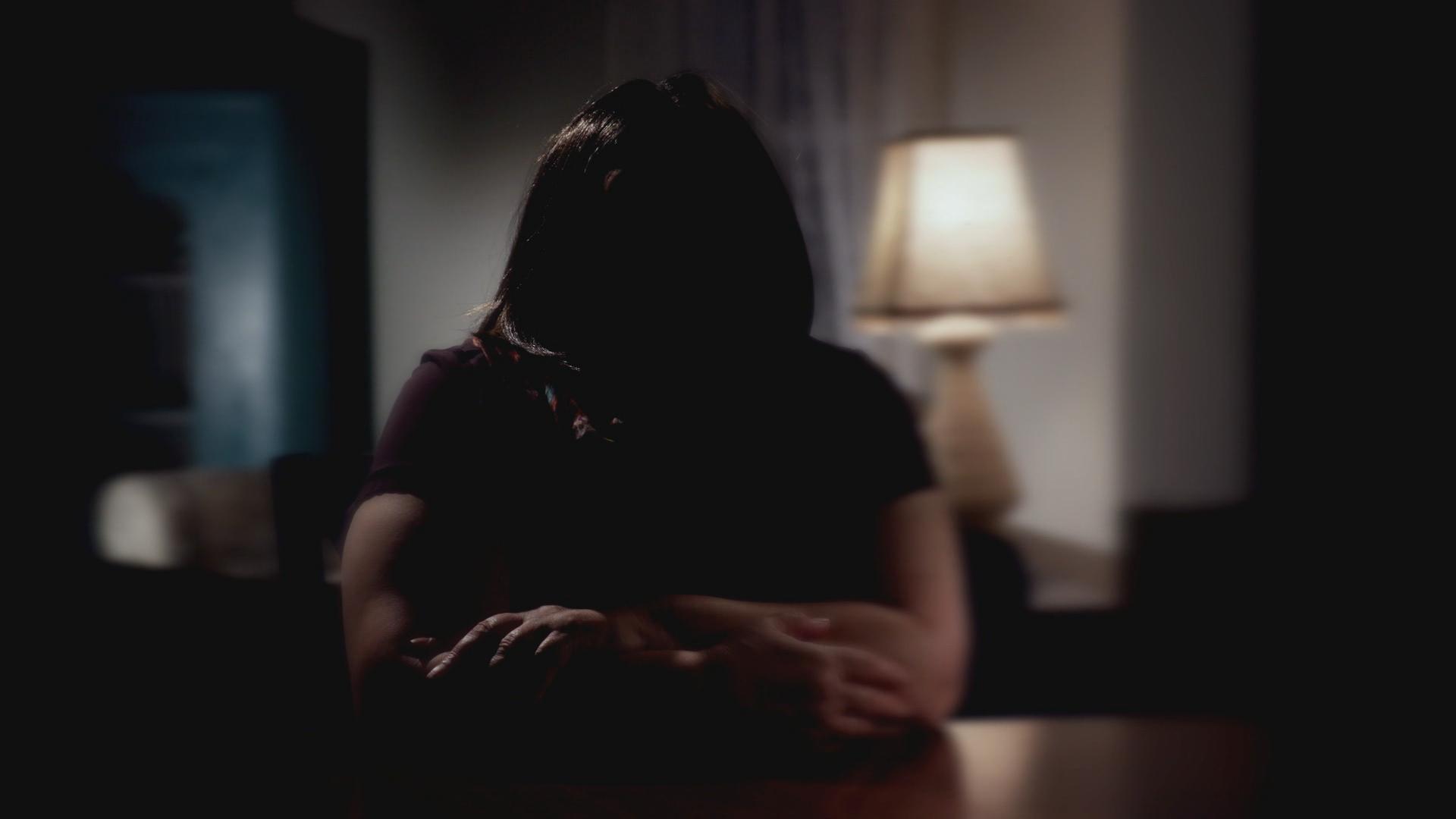
"That place" was the forensic unit of the St. Thomas Psychiatric Hospital, about 30 kilometres south of London, Ont.
Documents obtained by The Fifth Estate — including institutional correspondence, official records and personal letters — reveal that between 1977 and 1983, men found either guilty or "not criminally responsible" for crimes including rape and murder were sent from the Oak Ridge Psychiatric Unit in Penetanguishine, Ont., to the St. Thomas hospital to serve as "teacher-therapists" to women with mental illness.
"They were criminals. They were convicted rapists," Margaret said. "They were just on a power trip. Like, they were supposed to be helping people. But ... I've never figured that out, how they were helping people."
It is one of the more bizarre chapters in the annals of Canadian psychiatric history. And to begin to understand why doctors might think mentally ill rapists would make good therapists for mentally ill women, you need first to understand the incubator in which the idea was hatched.
I. The Oak Ridge experiment
The male patients sent to St. Thomas were all considered "graduates" of a treatment program at the Oak Ridge Psychiatric Unit in Penetanguishene, for years Ontario's only forensic hospital for those who were found criminally insane.
The hospital housed some of the country's most notorious offenders, men like Peter Woodcock, who had been convicted of murdering three children in Toronto in the late 1950s, and David Lariviere, a reputed mafia hitman who'd also killed a woman with a wine bottle as she lay sleeping beside him.
For more than 15 years, patient-inmates at Oak Ridge were subjected to experimental treatments that included sensory deprivation, hallucinogenic drugs and physical punishment.
The program has since been called "flagrant and outrageous" by an Ontario Superior Court judge. But 50 years ago, it was considered avant garde by many in the psychiatric community.
The unorthodox program was the brainchild of Dr. Elliott T. Barker, who in the mid-1960s was a newly minted psychiatrist fresh out of the University of Toronto.
He'd been inspired by the work of British psychiatrist Dr. Maxwell Jones, who'd developed the concept of a "therapeutic community" for the treatment of the mentally ill. A fundamental component of a "therapeutic community" was that patients would take an active role in their own treatment and serve as role models to each other.
The year after graduation, Barker and his wife travelled the world, visiting a Chinese prison camp in Maoist China to observe behaviour control techniques, to a kibbutz in Israel to meet with philosopher Martin Buber and to therapeutic communities in Britain and Denmark.
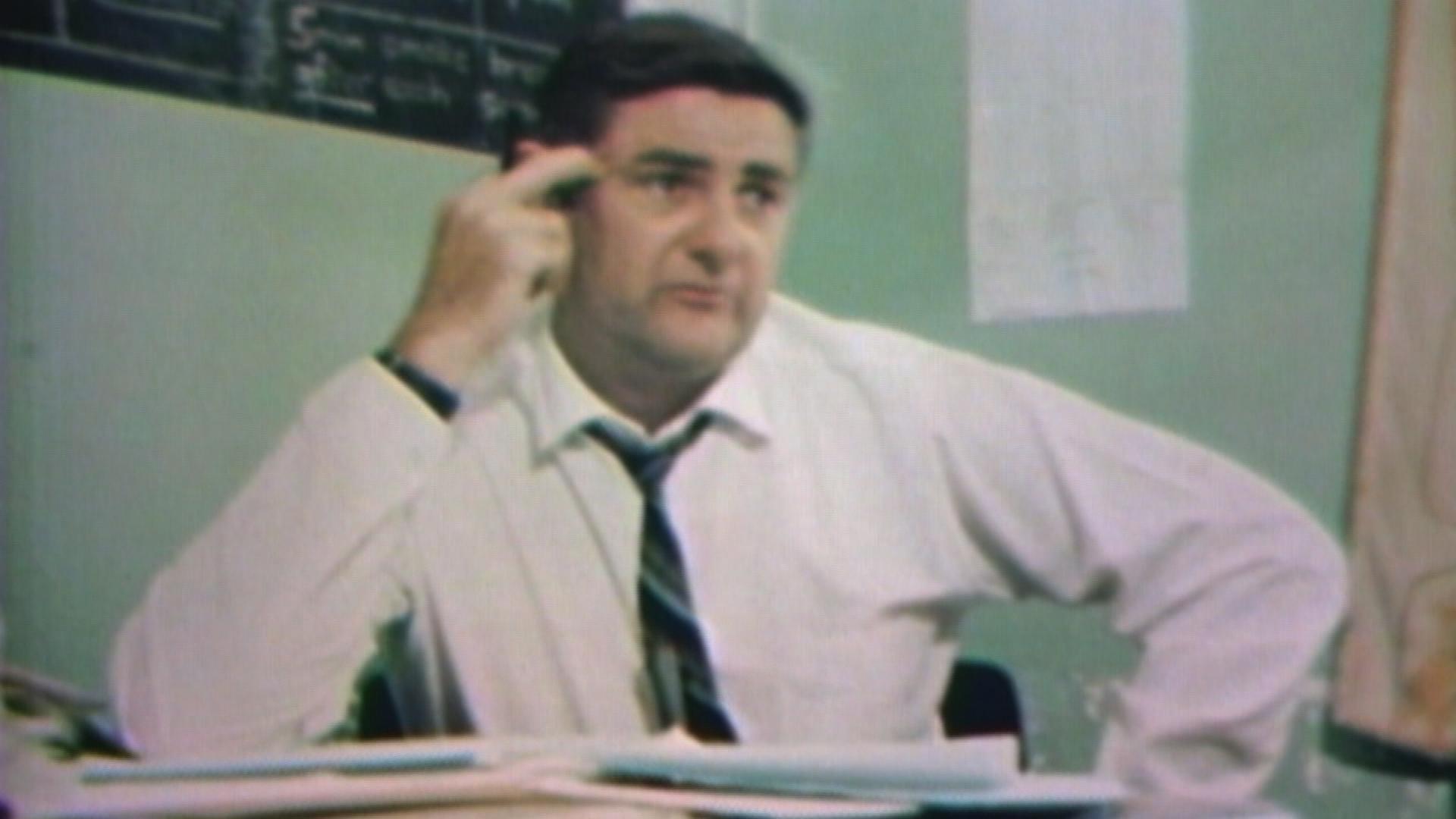
Barker arrived at his new job at Oak Ridge in 1965 with a novel plan of his own, one inspired in part by his travels. He would combine coercive techniques like truth serums and sensory deprivation with patient-led encounter groups to force psychopaths to confront their illnesses. It would be called the Social Therapy Unit.
"I think I was more idealistic than I am now," Barker said in an interview recorded in 1993 and obtained by The Fifth Estate. "I thought we were developing the best program in the world and we really were going to fix psychopaths and these patients really were going to get better."
One of the key components of the Barker plan was that patients would serve as therapists to each other. To an underfunded institution, it was an attractive solution to a rather ugly problem: there weren't enough doctors on staff to treat prisoners.
But if the initial motivation had been to make a virtue out of necessity, Barker doubled down on his idea.
"I hired a patient when there were no staff around, a patient who could do superb mental statuses, better than I could, and he'd see each new admission and write up a beautiful mental status," Barker said in 1993. "He was there for about six months until he ran off with the social worker's wallet and credit cards and whatever."
The prisoner-patients at Oak Ridge could order drug treatments for each other, including LSD, methamphetamine and truth serums. Alcohol treatments were another favourite. The men, some of them severe alcoholics, have said they would be forced to drink large quantities of high-proof alcohol. The goal wasn't to treat their mental illness, but to weaken their defences and force them to examine their own shortcomings.
"The point of the whole program was to break us down mentally," former Oak Ridge patient Jim Motherall said in 2016. "They believed if you could strip away all our bad defences that got us into trouble, they could rebuild us as better human beings."
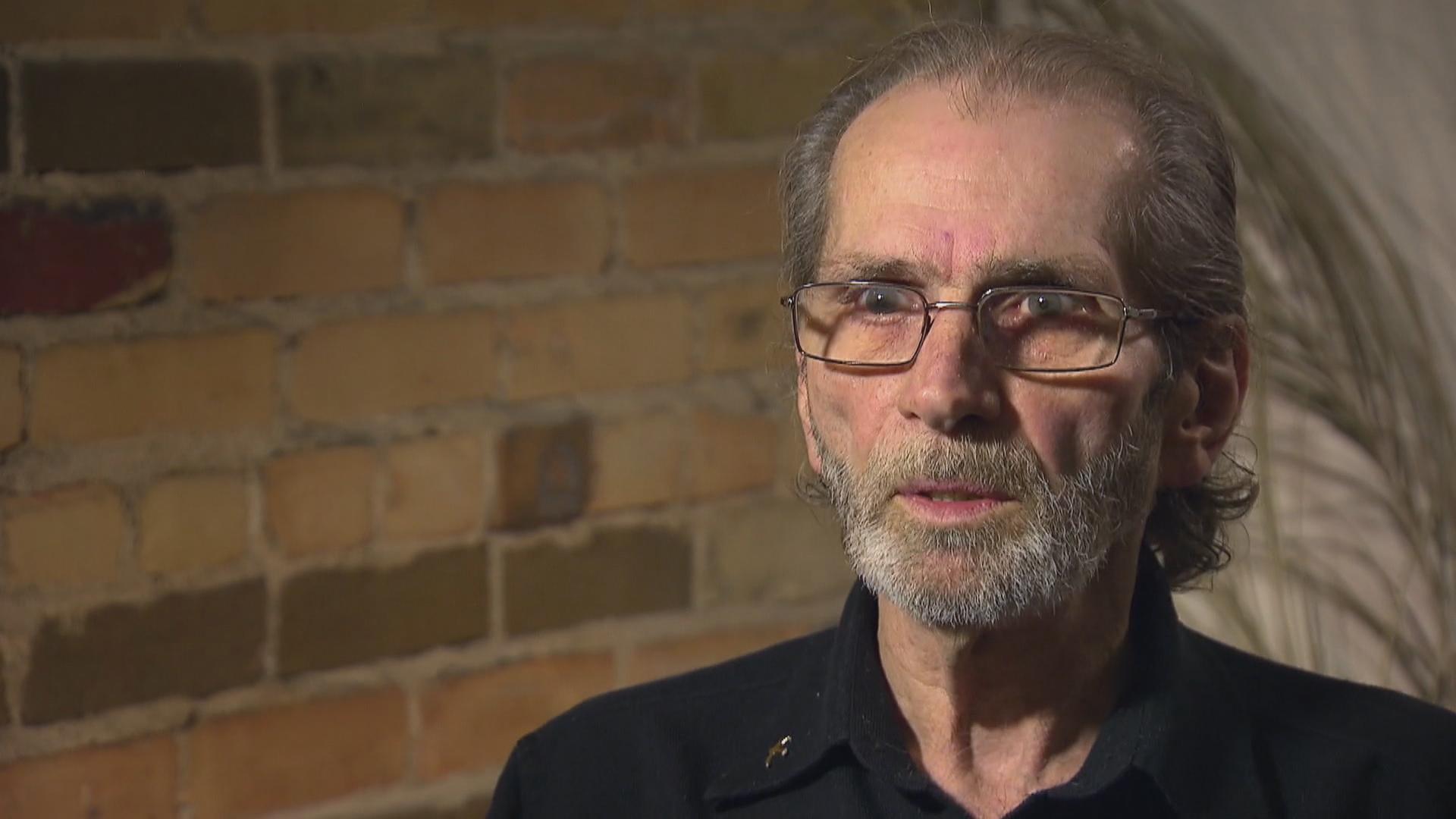
Motherall was sent to Oak Ridge in 1972 after he attacked a 15-year-old girl with a tire iron, an offence he admitted was not his first, nor would it be his last. He was diagnosed as having a personality disorder and underwent numerous experimental drug treatments at Oak Ridge, including LSD and a hallucinogen called scopolamine.
"They gave you six shots a day of that stuff. By the end of the first day, you didn't know who you were or what you were doing," said Motherall. "You can't do that to that many people over and over … and call it treatment because that's the nice word people want to hear when the real word is torture. Cause that's all it was beginning to end," he said.
At the outset, Barker thought patients would take part willingly in the new programs, but that didn't always happen. To ensure that even the most reluctant patients would submit to the "therapy," Barker invented the Total Encounter Capsule.
Some say he cribbed the idea for the capsule from the U.S. military, but wherever the inspiration came from, the reality was stark.
The capsule was a windowless room with padded walls and no furniture except for an open toilet. Lights were left on 24/7 to remove all references to time and food was administered through a tube in the wall. Groups of prisoners, usually naked, would be locked in together for as long as 10 days at a time, their only task to confront one another about their mental flaws.
"It didn't matter if you cried, there was no compassion, there was no recognizing you as a human being who's had enough," said former patient Allen McMann.
McMann is now homeless and living on the streets of Vancouver, but in the mid-1970s, he was a 16-year-old who'd tried to run away from a group home to escape abuse.
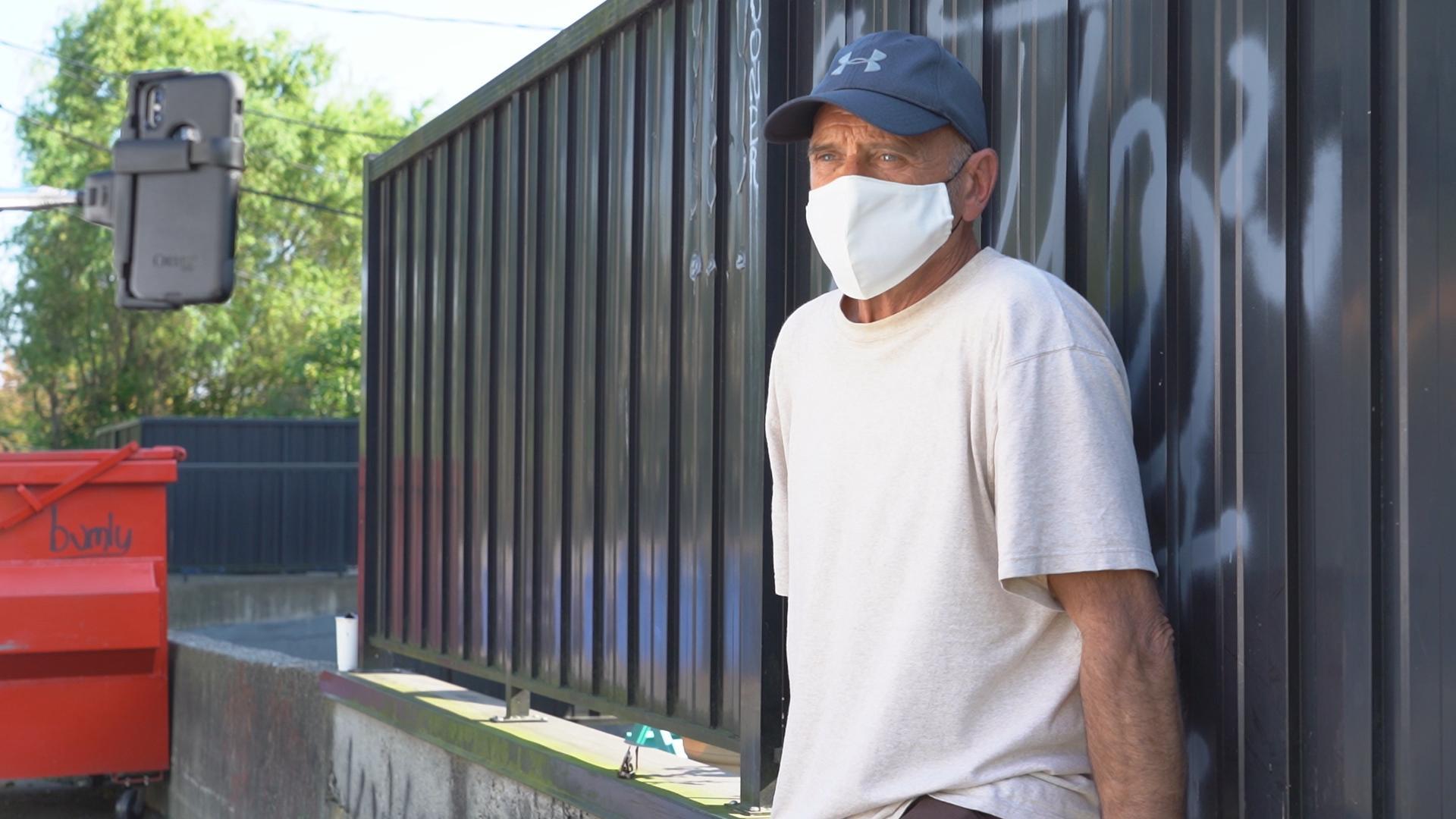
Authorities pegged him as a troublemaker and sent him off to live with the country's most dangerous offenders in Oak Ridge.
He spent his 17th birthday in the capsule, where he was first celebrated and then punished by a patient who was a few decades older than him.
"They took toilet paper and they wrote Happy Birthday with it on the wall. And later that day … one of the guys wanted me to masturbate him," he said. "I didn't know what a pedophile was. When I went there, I was a virgin. I wasn't the brightest kid on the block, I readily admit that."
If the capsule was intended as therapy, then to the patients, the MAP program never seemed to be anything other than punishment. MAP stood for motivation, attitude and participation, or as it's been called more recently by the patients themselves, torture.
"They would strap your legs together and then you'd be put on the floor, and you had to maintain a perfect T-square position," said McMann. "You weren't allowed to move unless you asked for permission, and asking for permission would be raising your finger for like two seconds and then putting it down. If you kept your finger up longer than that, they would accuse you of trying to garner favour from the teacher."
Barker would later describe his role in day-to-day operations at Oak Ridge as not so much a doctor but as a sort of master puppeteer.
"My policy was to work with the key power players, the key attendants who had informal power and the key patients who had informal power and me, and I was like a politician negotiating," he said in the 1993 interview. "I had total control."
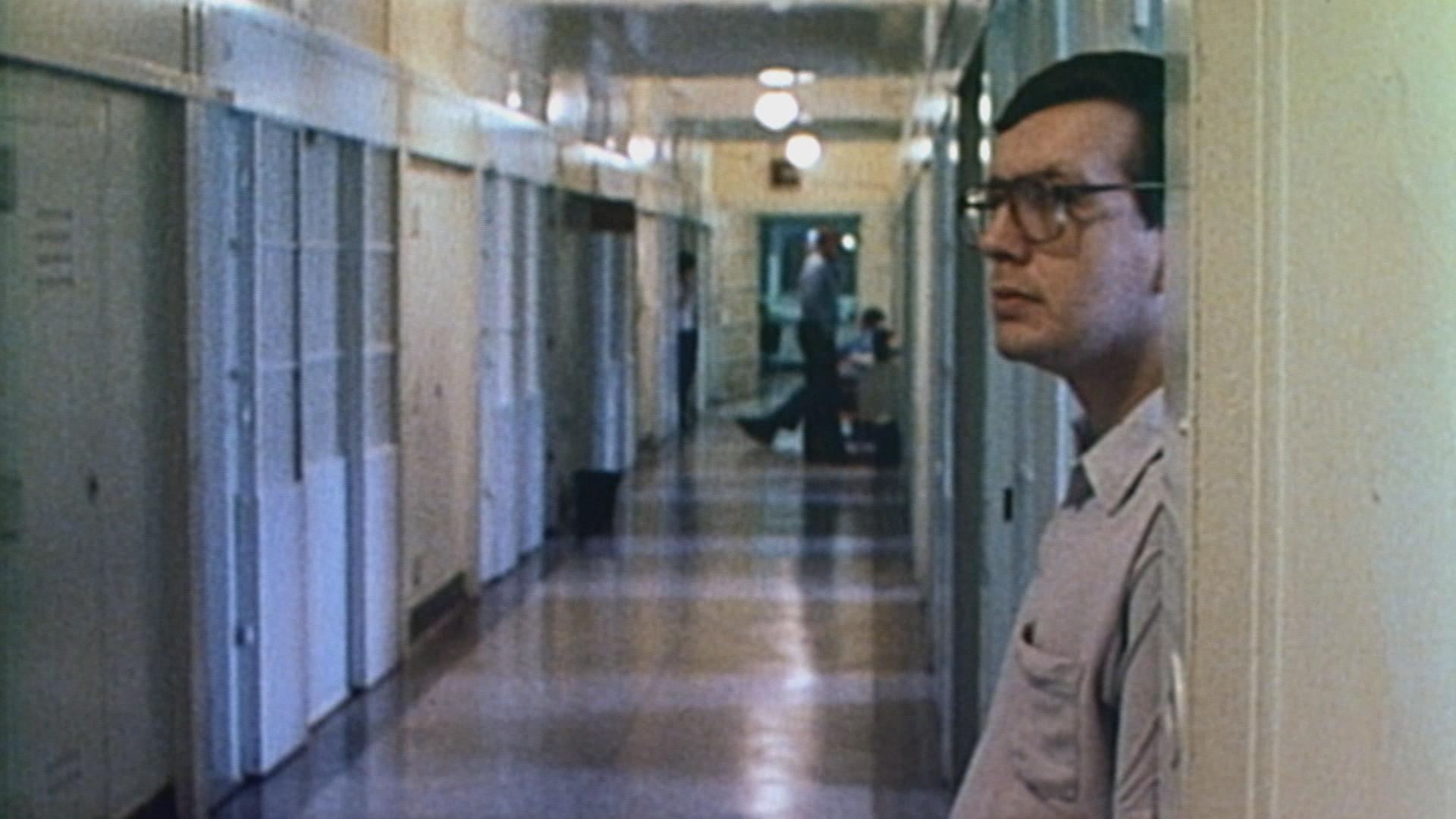
Looking back, it's hard to imagine how the psychiatric community, let alone government authorities, could have viewed the Oak Ridge experiment as an exciting mental health initiative.
But when you look at the history of mental health hospitals, it becomes clear that change, almost any change, was seen as an improvement. Asylums, as they were known in the earlier 20th century, were desolate places where those with mental illnesses were warehoused and the focus was on controlling patients, not treating them.
Dr. John Deadman, a psychiatrist who was a contemporary of Barker's, said even as recently as the 1950s, little was known about how to treat mental illness. Treatments for a diagnosis like mania were not only crude but cruel.
"The only way you could deal with a patient who was manic was to put them in a tub with continuously running water through the tub," said Deadman.
"It had a canvas cover on it so they couldn't get out, just their heads stuck out ... and then you lowered the temperature of the water and they went into a state of hypothermia. That was the only treatment they had for mania at that time."
Then the swinging '60s came along. New ideas began to spread like contagion and the field of psychiatry was not immune.
At McGill University in Montreal, Dr. Ewan Cameron was conducting CIA-funded experiments on mind control and sensory deprivation. While the public didn't know about it, some in the field of psychiatry did.
"At the time Elliott Barker was doing this, this was all new fresh stuff. And I don't know exactly what his motivations were, but he really felt he was trying cutting-edge therapy," said Deadman, who would later become medical director of the Whitby Psychiatric Hospital.
"I met him on a stag weekend ... and I can remember he was really quite enthusiastic about all these things and perhaps not as critical as he should have been."
There's no evidence that the programs at Oak Ridge were funded by the CIA. The federal Department of Health supplied Barker with LSD to conduct his experimental treatments. In the 1993 interview, Barker bristled at the idea that hallucinogens were forced on patients.
"God, the guys we had there were lining up for LSD. Everyone wanted it. It was the '60s and we gave it in a responsible way," he said.

For a while, Barker was a darling of the psychiatric world, his programs praised by government officials, the media and other psychiatrists who frequently toured the Oak Ridge facility.
The superintendent of Oak Ridge, Dr. Barry Boyd, bragged about his young doctor's successes to visiting officials.
But by the early 1970s, Barker himself began to doubt his treatments always worked.
"Boyd used to say to people: 'Dr. Barker has a program that will cure people — next month. You know, by next month they'll be cured.'" Barker said. But "by that time, guys had been out and [reoffended] and it was pretty clear that ... guys were going out and getting into shit."
By that time, he'd been working with psychopaths for about five years and his initial belief that he had come up with a way of curing them had been replaced with a new belief, one firmly rooted in reality and tinged with the bittersweet.
"You have to be burned by psychopaths a few times and survive it before you can like them and enjoy them and not be hurt by them," Barker said.
"Psychopaths are marvellous at making you think that their world revolves around you…. And if you believe that and sort of bask in that glory and then … you find one day that they deal you off or stick a knife in your throat — not literally — that you mean nothing to them emotionally."
Around 1971, Barker took a leave of absence from Oak Ridge and retreated to his farm just outside nearby Midland. He set up a private practice in town and from time to time, he served as an expert witness in court.
In the 1970s, when Canada was debating the abolition of the death penalty, Barker developed a new reputation — one he described as a "hanging psychiatrist."
"There are guys who are so dangerous nobody is going to affect that," he said. "It's far better [rather] than curtailing parole, which is what they were doing, to hang a few people even though it was wrong. And you can pick out a few people who are absolutely dangerous and absolutely untreatable and hang them."
WATCH: How Dr. Elliott T. Barker became known as the 'hanging psychiatrist':
But even though Barker now believed that the sickest of his patients could never be cured, the programs he'd developed for treating them continued at Oak Ridge under a new doctor, Gary J. Maier.
"Gary Maier was really out of the box, you know, he's a kind of spiritual guy," said Welsh-American author Jon Ronson, who interviewed him for his 2011 book The Psychopath Test. "He talked to me a lot about looking into people's eyes and seeing their souls."
Maier had recently graduated from medical school, was not a psychiatrist and did not have a background in forensic medicine. Two or three times a week, he'd pay a visit to Barker to discuss whatever issues came up. It became clear early on that Maier was quite different from Barker.

"I'm an agnostic psychiatrist — I don't really believe a lot of psychiatry," Barker said in the 1993 interview, "but he was a believer. But his fatal flaw was he didn't recognize the politics of the situation and after a year, I went to Boyd and said: 'Look, I want to stop supervising Gary. I think it's not going to work. I think this guy is going to run afoul of the attendants.' "
Barker's prediction was correct. Ronson said Maier tried lots of what might now be considered new age therapies on his patients — things like chanting and dream analysis — but his favourite treatment was said to be LSD. He'd tried putting small groups of prisoners on acid trips, but one day decided to give LSD to the whole ward at once.
"That seemed to be a turning point," said Ronson. "I think the guards were like 'This is becoming a real safety risk now.' And Gary Meier turned up one day to find that ... his key didn't work anymore, the locks had been changed and that was the end of the program."
WATCH: How the program under Dr. Gary Maier ended:
Barker had been in and out of Oak Ridge since going into private practice, but now with Maier's departure, he was lured back full time, at least for a year.
What his involvement was in the next evolution of the Oak Ridge experiment isn't clear from the documents, but the programs he'd created had long since taken on a life of their own. And they were about to mutate.
II. The St. Thomas experiment
In 1976, the first forensic unit for women in Ontario was opened in a corner of the St. Thomas Psychiatric Hospital, a vast sprawling institution in southwestern Ontario.
There were fewer than 30 women in the unit in the early days.
Few people save for those directly involved would ever have known about what went on there if it wasn't for a former Oak Ridge patient, an American named William Brennan.
In 2018, Brennan died of cancer at the age of 62. Not long after his death in Grand Island N.Y., his widow, Kristie, came across an old trunk her husband had kept tucked away.
Inside was a stack of documents about a treatment program at the St. Thomas hospital. The program appeared to mirror the one at Oak Ridge, with one important difference. Mentally ill patients like her husband Bill — men convicted of rape and murder — were sent to St. Thomas to serve as therapist-teachers to mentally ill women.
Brennan was 18 years old when he was sent to Oak Ridge after being convicted of raping two women near Sault Ste. Marie and the attempted rape of a third.
He'd told Kristie about his experiences at Oak Ridge but he'd shared few details about St. Thomas, saying it was too upsetting.
"I feel sad and guilty that he didn't tell me more," she said.
Prior to being sent to St. Thomas, Brennan had been told he would soon be paroled.
His prison records, though, indicate a change of heart on the part of corrections authorities who describe him as being "unstable" upon his arrival at St. Thomas and having poor impulse control. Nonetheless, in 1977, he became the fourth Oak Ridge patient to serve as a "teacher" at St. Thomas.
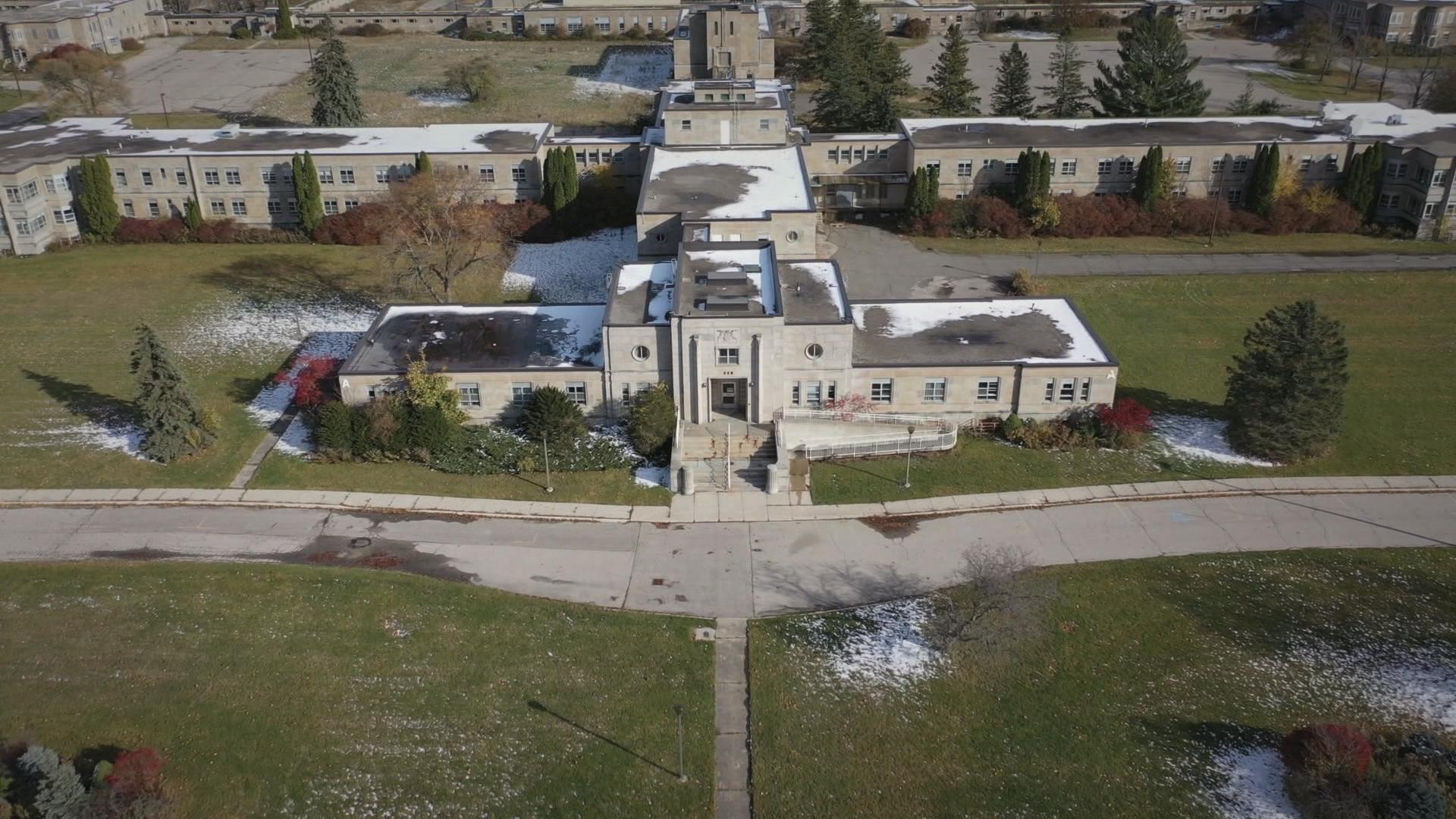
The Fifth Estate was able to track down the first "teacher" to be sent in 1977 from Oak Ridge to St. Thomas. John, an incarcerated sex offender, is serving time in a maximum security prison for a variety of crimes, but his "index offence" back in 1975 was the rape and indecent assault of a young woman in southern Ontario. He was sent to Oak Ridge at the age of 19, where he became a model prisoner.
"I realized the path of least resistance was to just do what they said and see if I could get out of there cause it was a hellhole. It was torturous," said John, whom CBC is not identifying to protect his personal safety in prison. "I [became] the poster child for the program because I'd sucked it all in, hook, line and sinker."
John was sent to St. Thomas with Mike, another Oak Ridge patient who John said had also been convicted of violent sexual assault.
It appears from the documents obtained by The Fifth Estate that a steady stream of patients convicted or found not criminally responsible for crimes like murder and rape were sent to St. Thomas over the next few years to be "therapists" to the women.
The women confined to the forensic unit had typically committed serious offences, but like Oak Ridge, there were also those who were considered nothing more than troublesome teenagers.
"I was really scared," said Margaret, who was 17 and not mentally ill when she was sent to St. Thomas.
"I thought it would be a bunch of teenagers, you know, no freedom, and maybe learn something out of the deal."
WATCH: Former patient recalls treatment:
Instead, she found herself locked up with women who had serious mental illnesses.
There was Judy, who'd killed her two children, and Gloria, who was dubbed "the swallower" because of her penchant for swallowing objects like spoons.
"Mary, poor soul," said Margaret. "She was really mentally challenged and she shouldn't have been on that ward…. She spent her whole time in that room, sitting on the floor and never getting out of there…. She was not getting helped whatsoever."
The "room" she's referring to was where women who ran afoul of their "teachers" were sent for punishment.
Like at Oak Ridge, the program was known as MAP, which stood for motivation, attitude and participation.
Women, often in restraints, would be forced to sit on their knees on a cold floor for hours. At night, they'd sleep together on a bare mattress in a locked room. How long they spent in the MAP room was up to their "teachers."
"They were inmates. They weren't, you know, psychiatrists or trained to do [anything]. The real staff ... the nurses, the male and female nurses, you'd hardly ever see them," said Margaret.
There was one doctor in charge of the ward, Dr. P.D. Gatfield, who came by no more than once a week, she said.
The female patients were forced to attend group "talk therapy" sessions that were meant to help them open up and discuss their problems, but the reality was much different.
"Really it was an attack therapy. It was very aggressive," said John. "So what you would do is enlist other people, the other patients, like up north, and [say], 'You have to confront them, and you have to confront them very hard,' and it became really reactive."
Some of the women refused to take part, or at least they tried to.
One former patient had been found not criminally responsible for murder and knew she needed help, but she was pretty sure she wasn't going to get it from the Oak Ridge patients.
"I told the teachers that I didn't trust them and that they weren't doctors, and this program … was not legitimate," said Emily, whom CBC has agreed not to identify to protect her privacy.

When she tried to leave the room, she said, the men went after her and took her to a cell where they tied her to a mattress and left her there for hours.
"They acted like they were experts," said Emily, "like they were holier than thou. That was their whole attitude."
John said the use of physical restraints to control the women was common, a technique they copied from the Oak Ridge program.
"It was a whole belt system," he said, "and [the women] could be put in cuffs to make them come to group and tied to another woman who would sit beside them and had to deal with their reaction…. It bordered on sadomasochistic restraining."
WATCH: Former psychiatric patient remembers being in restraints during treatment:
III. 'I was terrified'
Perhaps the most frightening aspect of the St. Thomas experience, at least from the women's standpoint, was that the patients from Oak Ridge were housed on the same ward.
"I was terrified. And so were a lot of the other girls that were in there," said Margaret.
"Everybody was afraid to even go to sleep at nighttime because the guys were always wandering around later than everybody else. And they were having relationships with other women there."
John said both he and the other prisoner sent with him had sexual relationships with women on the ward.
"There was no real security," he said. "The staff were at the front end in the office, more times than not. We would sit, you know, around a table, at off times with meals and the women would be in their nightclothes and whatever. So, we'd go, all go to the yard together and…"
His voice trails off.
John said he believes the relationships he and Mike had with women on the ward were consensual, but according to Emily, who was not there at the same time as John, that wasn't always the case.
She told The Fifth Estate that two women, including one who was physically disabled, told her they'd been raped.
The Fifth Estate was unable to independently confirm that was the case. However, at least one pregnancy occurred in the six years the program existed.
Records show that William Brennan had a sexual relationship with a patient we're calling Ann, who subsequently gave birth to a baby girl. The baby was given up for adoption in 1979.
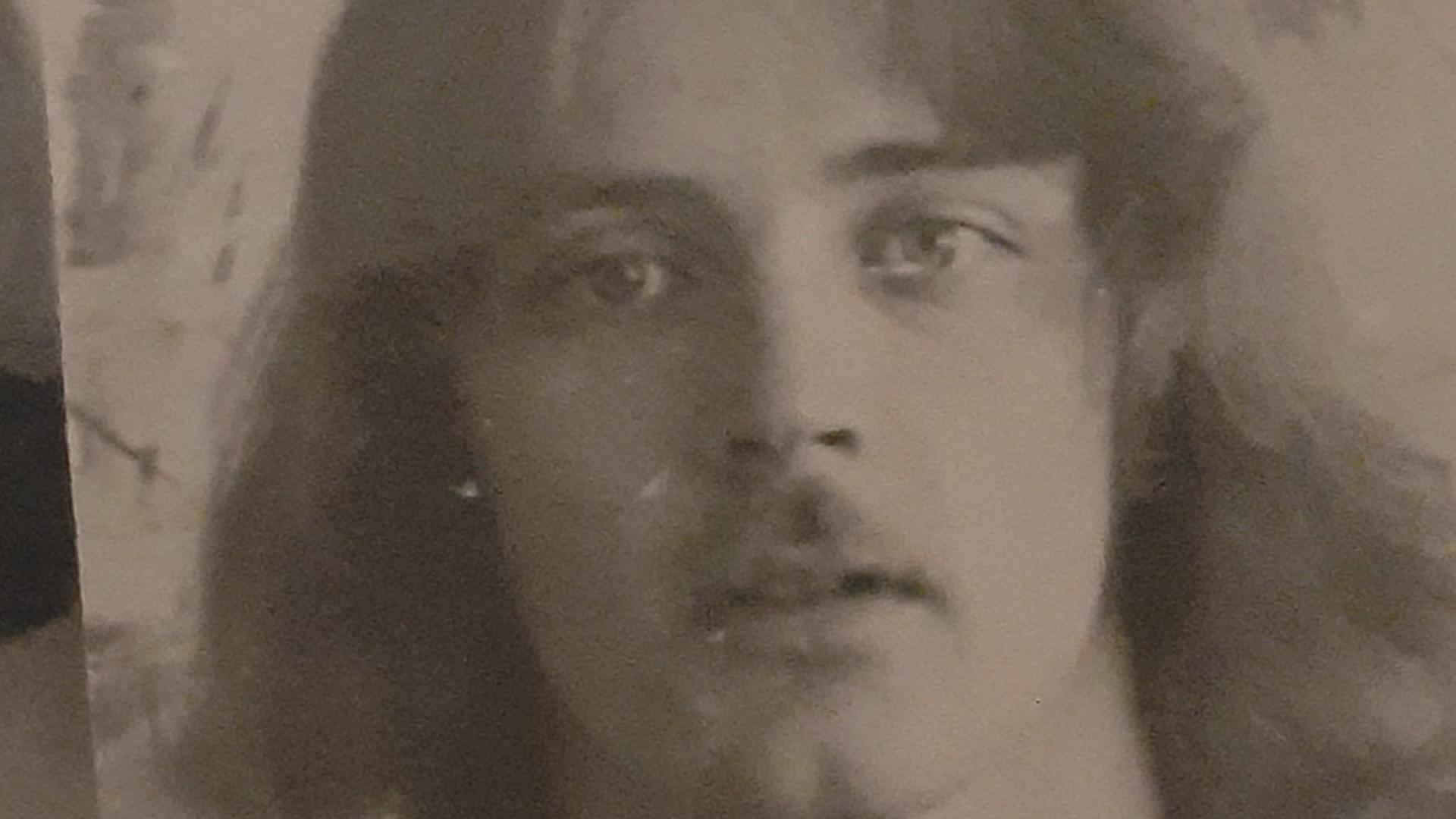
Sometime after Ann became pregnant, Brennan was moved, although it's not clear whether he was sent to another ward or another prison.
What is known is that later in 1979, he was transferred to a U.S. prison against his wishes.
The Canadian government had recently signed a prisoner exchange treaty with the U.S. that called for the voluntary repatriation of prisoners who wanted to return to their home country. In a formal hearing, an audio recording of which is contained in the documents saved by Brennan, he told a U.S. judge he preferred to stay in St Thomas.
Nonetheless, he was transferred to Lewisburg Prison, a high-security facility in Pennsylvania, far from his family in Wisconsin.
"I thought his treatment at Oak Ridge was bad," said Kristie, who met her husband years later, "but only after going through his letters and [the documents] did I realize how cruel and heartless Canada was."
Throughout her pregnancy, Ann wrote letters to Brennan that make it clear she hoped he would return for her.
"I still see a worthwhile and fulfilling future for the three of us," she wrote in 1979.
"Do you still have plans in marrying me? I would very much want to be your wife," she said, seemingly unaware that he already had a long-term common-law partner.
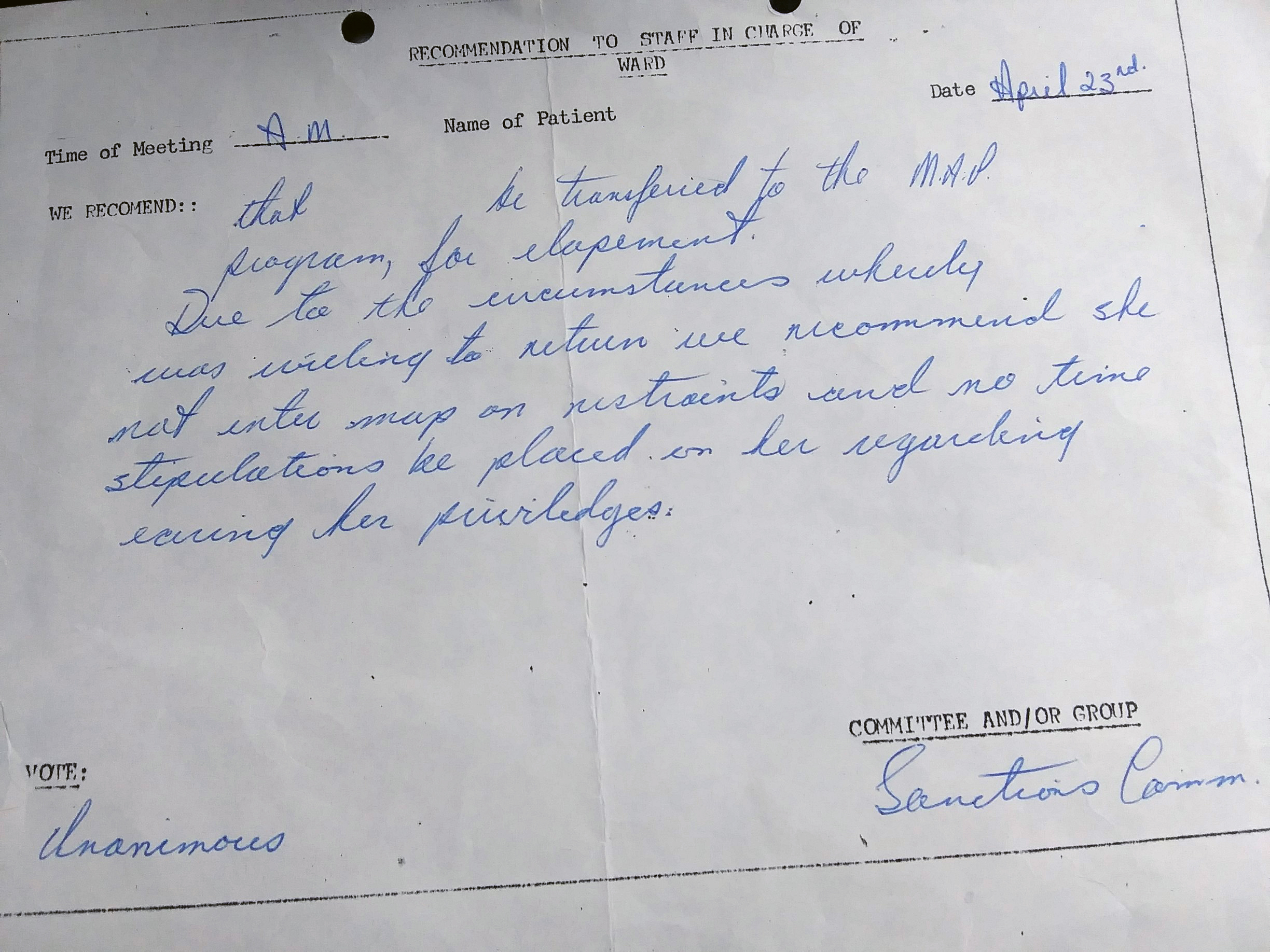
Her letters also describe a steady stream of Oak Ridge patients coming and going from St. Thomas and in some cases, engaging in sexual relationships with female patients. Despite being pregnant, she also mentions her own frequent confinement in the MAP room.
The Fifth Estate was unable to locate Ann but tracked down relatives who still live on a Cree reserve in northern Quebec.
They, too, have lost touch with Ann, who they said had been adopted by the widow of a local fur trader when she was just a girl.
She was sent to a residential school in Quebec and she later ran away, they said.
The only record of her after that is a small clipping from 1975 in a Halton, Ont., newspaper that said she was found not criminally responsible for the killing of a man in her rooming house. She was sent to St. Thomas for treatment.
IV. The end of the experiment
In 1983, the Barker-inspired treatment programs ended at both St. Thomas and Oak Ridge. By that time, Dr. Maier had obtained his psychiatric credentials and moved to Wisconsin where he went to work for the Department of Corrections.
Several years before that, Barker had left the hospital and returned to private practice. He had long since stopped believing that all psychopaths could be treated and now believed that poor parenting and consumerism were ultimately to blame for mental illness. He argued that parents driven by a desire for two incomes were abandoning their most important job, that of raising their children.
"I see that the two forces that make parents want daycare and lead away from the attachment [parenting] are consumerism and patriarchy," he told a freelance journalist in 1997.
Along with a former Oak Ridge patient, Barker founded the Society for the Prevention of Cruelty to Children, an organization that never captured the attention of the psychiatric community the way his Oak Ridge programs had.
In 2000, some of his former patients at Oak Ridge tried to file a class-action suit against Barker and Maier and the Ontario government, saying their treatment amounted to torture and a breach of the doctors' fiduciary responsibilities.
The former patients were not granted class-action status and refiled their case listing 28 plaintiffs. The case dragged on for years and eight of the men died before a judgment was delivered.
In June 2020, an Ontario Superior Court judge ruled in favour of the Oak Ridge plaintiffs, saying their treatment amounted to "assault and battery," and that the defendants had indeed violated their fiduciary responsibilities.
Earlier last month, the judge awarded the 28 plaintiffs a total of about $10 million plus interest going back to 2000. The individual awards ranged from a low of $1,000 to a high of $2.7-million plus interest.
The provincial government and the doctors are appealing the judgment. No one representing the government or the doctors was available for comment.
In 1993, as he sat with a historian, their rambling two-hour conversation recorded on VHS, Barker seemed to predict the lawsuit.
He told his guest that "by the '80s, every patient would rather have a lawyer than a psychiatrist." He complained that history was being "rewritten retrospectively," and predicted the pendulum would swing back again.
WATCH: Psychiatrist defends his work:
"It was seen at the time as a reasonable thing to be doing," he said. "And now, I resent the time I have to answer questions about it or defend it or being accused of doing awful things. It pisses me off."
Barker still lives in Midland, but for the past eight years, he's suffered from dementia, said his wife, Julie Barker.
She said she hasn't told him about the legal judgment against him because she doesn't see the point of upsetting him. He was excused from testifying in court because of his illness.
But on that June day in 1993, his mind still sharp and the video camera rolling, he shared a story with his guest.
Barker recalled how a former doctor from Oak Ridge had come to visit him and he'd encouraged the former colleague to leave the hospital and go into private practice.
"It's like this," he said, as he described the job of an Oak Ridge psychiatrist, smiling at the punchline he knew was coming. "You've got your head halfway down in a 45-gallon drum of shit, and you're moulding the surface and you're getting all excited about the shapes you're creating. But that's where you are."
And he laughed heartily at his own joke.
- Watch full episodes of The Fifth Estate on CBC Gem, the CBC's streaming service
